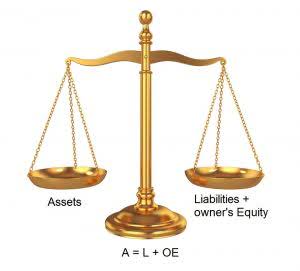
In such cases, the extra take-home pay from untaxed tips might be partly offset by a smaller tax refund or credit at year’s end. These scenarios will vary, but it’s a reminder that tax policy changes can have complex ripple effects on worker benefits. In practical terms, a waiter who used to earn $2.13/hour plus tips would now earn $7.25/hour (or the prevailing state minimum) plus tips – a substantial bump in reliable paycheck income. That steady base pay, combined with tax-free tips, could greatly improve workers’ financial security.
Guide to FLSA Overtime Exemptions for Executive, Administrative, Professional, Computer, and Sales Roles
- Knowing the right forms and documents to claim each credit and deduction is daunting.
- Employers can use a tip credit to pay a lower base wage, but if tips don’t bring a worker’s total up to the minimum wage, the employer will need to cover the difference.
- Kickfin and TipHaus are both designed to digitize tip distribution for restaurants.
- In this guide, we’ll cover everything you need to run payroll smoothly in a restaurant.
- Forty-three of the 50 states require payroll reports related to income tax and state unemployment taxes.
- Employees should provide a tip report (on Form 4070) if they collect more than $20 in tips a month.
Remember, you also need to withhold Debt to Asset Ratio federal income tax from employee wages based on IRS guidelines. Depending on where your business is located, you may also need to consider state and local taxes. To do all this, opt for a good payroll service that can help streamline your tasks for reduce the risk of manual errors. These platforms can also help you provide detailed pay stubs and maintain required payroll records—a crucial aspect often overlooked by many small businesses. However, much like minimum wage requirements, this definition varies from state to state.
- Payroll software will help you automatically verify compliance, saving you time and headaches each pay cycle.
- This category includes bussers, food runners, barbacks, fast food workers, counter workers, and dining room attendants.
- The practical upshot for workers is a pay raise by way of tax relief, potentially making tipped occupations more lucrative and sustainable.
- When it comes to restaurant payroll, we’ve stirred the pot and served up a feast of knowledge.
- If the tip income reported by the employees is less than the estimated amount, the employer must allocate the excess amount among the employees.
- A tipped employee is an employee who receives a designated minimum amount in tips per month.
What Employers Need to Know About Tip Reporting
They’re the frontline of service in a full service restaurant and should be rewarded for their direct efforts in making the guest experience what it is. After that, it’s entirely up to the restaurant how it sets up its wage and tipping structure. Most restaurants recognize the hustle of bussers and food runners and include them in tip-outs, while others might loop in the host or hostess. In a tip pool, all tips are combined and then redistributed among the tipped workers using a predetermined formula. For example, restaurant servers may receive a percentage of the tip pool based on how many hours they worked. This arrangement is intended to distribute tips equitably among all tipped workers.
Legal Requirements

In light of the 2025 “No Tax on Tips” legislation, tipped employees no longer have to pay federal income tax on the first $25,000 in tips earned each year. However, they do need to pay taxes on earnings from services fees, autogratuities and other compulsory charges that are not considered tips by the IRS. Restaurant tip management can be confusing and time-consuming, especially if your restaurant has a large staff. Differences in state laws regarding employee wages and tipping, as well as the overall increase in credit card usage, further complicate how tips are shared with your employees. The FLSA allows a lower hourly wage for these employees, provided that their tips bring their earnings to at least the federal full minimum wage rate. Under the FLSA, a tipped employee is an employee engaged in an occupation in which they customarily and regularly receive more how do restaurants pay their employees than $30 a month in tips.
- Front-of-house staffers typically earn a combination of hourly wages and tips.
- For business owners, everything is done digitally and there’s no need to have cash on hand or monitor cash transactions for errors.
- Here are some to consider when determining payment for your restaurant employees.
- Understanding paycheck deductions is crucial for both employees and employers.
- Over time, we’ve heard from customers who prefer to use up that cash to pay out tips, then distribute the remaining tip amounts via Kickfin.
That means that you can focus on the things that matter most to your customers—and on next quarter’s targets. In summary, paycheck deductions are an essential part of the payroll process in the restaurant industry, much like balancing the books at the end of the night. This factor might seem minor, but it can significantly affect employees and employers. In others, it’s either included in the bill as a service charge or not practiced.
Restaurant Scheduling and Payroll Platform
Many restaurants rely on automated payroll systems to stay on top of payment deadlines and avoid penalties. Even the most organized business owners can find themselves confused when managing dozens of tipped employees. Software, including tax retained earnings reporting software and POS management systems, can make the process of tracking payouts and income easier. In particular, a cashless tip management system can provide a host of benefits to employers and employees themselves.

Moreover, take a quick note of their employment status, also called employee classification. It’s about whether they are full-time, part-time, or contract-based employees. This classification directly affects the taxes withheld from their paychecks and the benefits they’re eligible to receive. Understanding FICA, properly withholding, and contributing according to the act’s parameters can be complex without adequate knowledge. However, implementing precise payroll systems and utilizing expert assistance when necessary can simplify this process effectively.

The employer must pay the worker the tip at the next regularly scheduled payday and can ONLY deduct $0.40 (which is 2% of the $20 tip). Regrettably, this is one of the most common methods that shady employers use to steal tips from their workers. Some employers will tell workers that they can deduct the “processing fees” and then deduct the entire fee for the whole transaction. That is, in our example, the employer steals tips by deducting $2 instead of $0.40.

Considerations When Setting Up and Running Restaurant Payroll
An extensive and ever-growing library of super handy employer guides on everything from human resource topics, important Labor Law updates, how to approach payroll for your company’s industry, and much more. As a content creator at Wagepoint, Michelle enjoys simplifying complex payroll topics and generating articles with actionable advice for small businesses and startups. When not at the keyboard, she enjoys chocolate, running, and quality television (not always in that order). Restaurants that focus on employee well-being, offering benefits like health insurance, retirement plans, and paid sick leave, are more likely to retain good staff. Many restaurant chains are beginning to adopt living wage policies to attract and retain talent. This has been especially true in cities that are enacting minimum wage increases.

